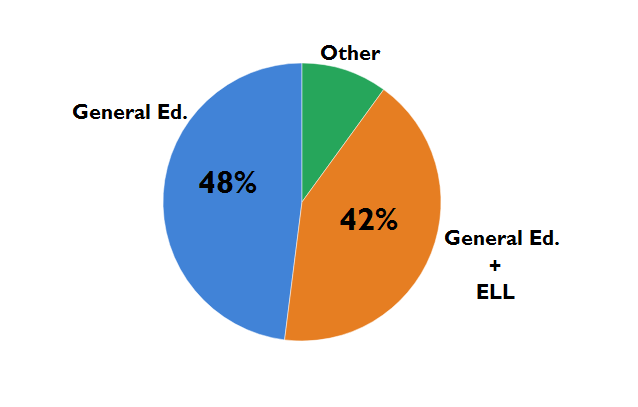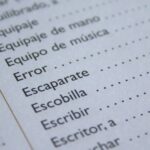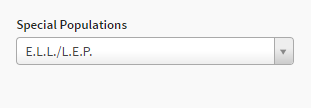As a means to understand how district and campus-level staff “acquire and use instructional materials for English language learners (ELLs),”the Council of the Great City Schools conducted a survey of educators in urban school districts nationwide during the 2012-13 school year. Of the 248 survey respondents, 59% were ELL teachers, specialists, and/or coordinators. Below are some key findings from the survey:
- 82% of respondents said their current ELL materials did not reflect the rigor required by standards.
- 48% used general education materials with ELLs; 42% used supplemental ELL materials in conjunction with core curriculum materials.
- 34% of respondents said that they know good materials for ELLs exist, but finding them is difficult and time consuming.
Learning List’s reviews can help educators identify products that support ELLs. Our alignment reports provide detailed information about each product’s alignment to standards. These reports analyze whether and specifically where the material addresses the content, context and the rigor required by the applicable standards, including the Texas Essential Knowledge and Skills, California, Florida, and Common Core State Standards. [Read more…]
 In addition to the alignment reports, our editorial reviews assess the instructional content and design of each material, including the supports provided for each special student population. Not surprisingly, many of the indicators of quality in a general education product are necessary supports for ELLs. For example, active reading strategies, audio readers, and visual elements help all students, including ELLs, read and understand a text. Research also indicates that thematic units; essential questions; vocabulary development activities; frequent, short writing assignments; and opportunities to discuss content and work with peers help ELLs in learning discipline-specific content and language skills. In addition, ELLs benefit from grade-level appropriate materials that are scaffolded, rigorous, and include connections to students’ lives. Learning List’s editorial reviews address all of these features.
In addition to the alignment reports, our editorial reviews assess the instructional content and design of each material, including the supports provided for each special student population. Not surprisingly, many of the indicators of quality in a general education product are necessary supports for ELLs. For example, active reading strategies, audio readers, and visual elements help all students, including ELLs, read and understand a text. Research also indicates that thematic units; essential questions; vocabulary development activities; frequent, short writing assignments; and opportunities to discuss content and work with peers help ELLs in learning discipline-specific content and language skills. In addition, ELLs benefit from grade-level appropriate materials that are scaffolded, rigorous, and include connections to students’ lives. Learning List’s editorial reviews address all of these features.
 Further, Learning List allows subscribers to filter their searches for products with ELL-specific resources and supports in teacher and student materials. Across grades, our reviewers look for teacher materials that provide guidance in modifying instruction to meet the needs of ELLs at different levels of language acquisition (i.e., emerging, expanding, bridging). However, to be characterized as an ELL resource, student materials also must include specific supports for ELLs. Such supports may include translations, multi-lingual glossaries, glossaries with audio capabilities, and annotated text. We feel it’s important that supports be evident in student materials, particularly at the elementary level, because they facilitate independent work and help ELL parents support their children.
Further, Learning List allows subscribers to filter their searches for products with ELL-specific resources and supports in teacher and student materials. Across grades, our reviewers look for teacher materials that provide guidance in modifying instruction to meet the needs of ELLs at different levels of language acquisition (i.e., emerging, expanding, bridging). However, to be characterized as an ELL resource, student materials also must include specific supports for ELLs. Such supports may include translations, multi-lingual glossaries, glossaries with audio capabilities, and annotated text. We feel it’s important that supports be evident in student materials, particularly at the elementary level, because they facilitate independent work and help ELL parents support their children.
Finally, our comparison tools make it easy for educators to strategically pair supplemental materials with specific tools for ELLs together with core curriculum resources to provide stronger support for language development in a subject-specific context.
Learning List’s reviews and tools can help educators meet the vexing challenges of finding and using materials more effectively with ELL students in the general education classroom. We share educators’ concerns and frustrations, however, about identifying materials designed specifically for use in English Language Development (ELD) classes. When submitted by publishers or requested subscribing districts, Learning List will review those materials for alignment to the applicable standards as well as for the unique attributes necessary to facilitate language acquisition.